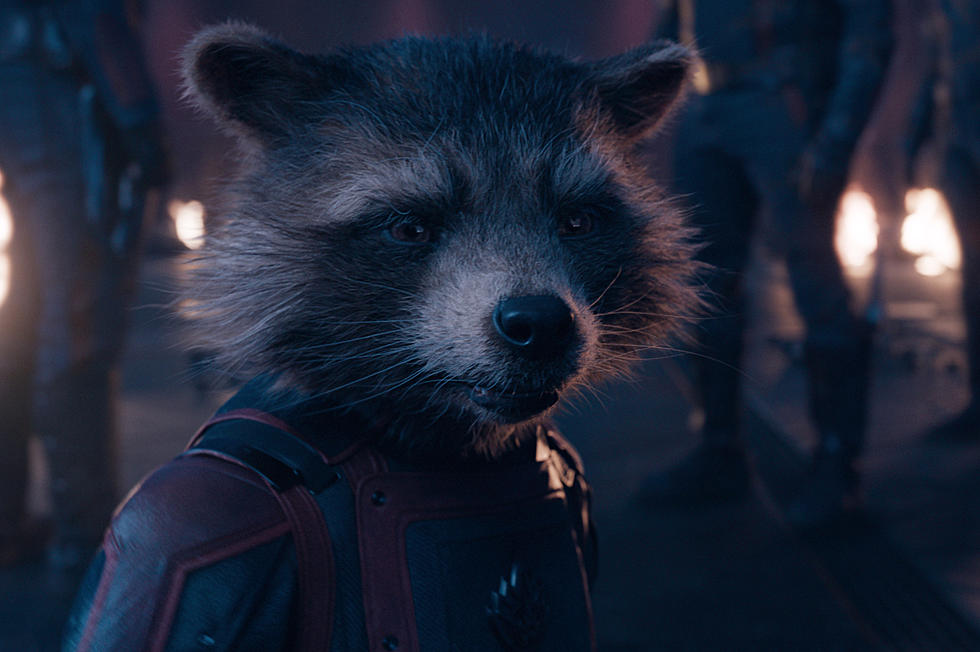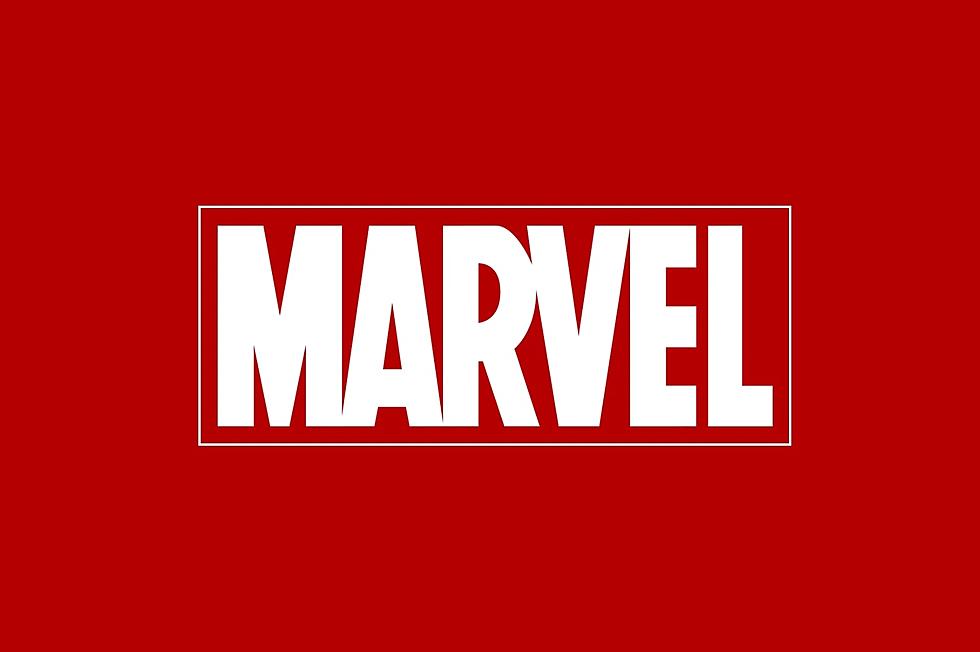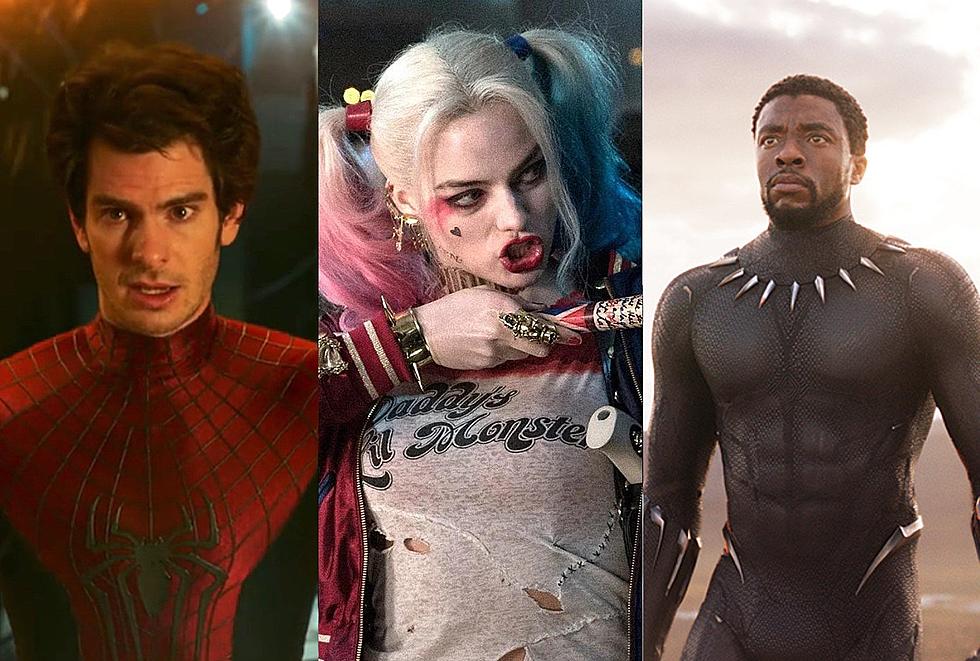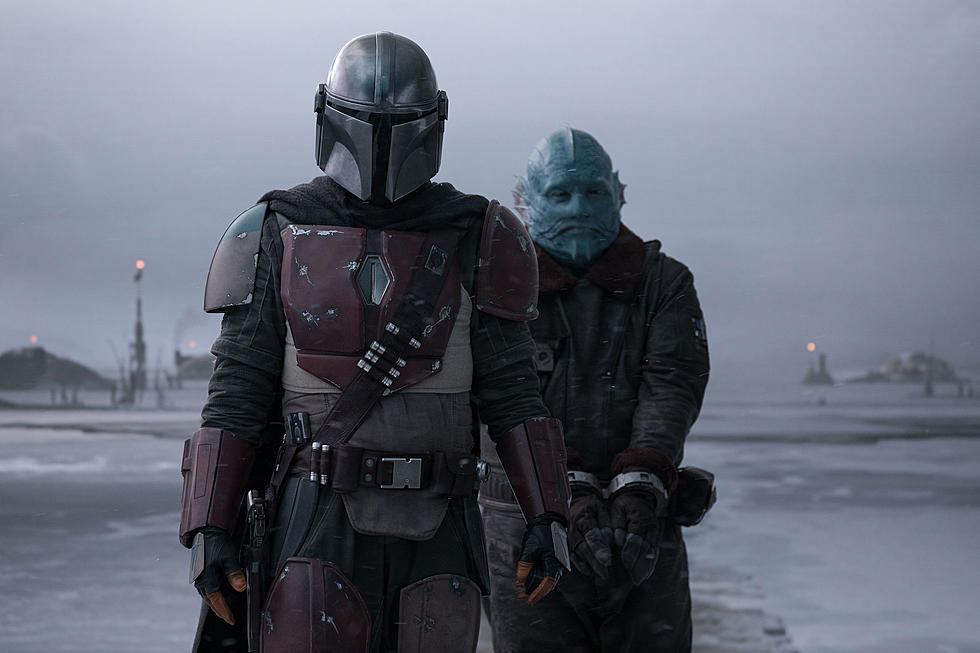
The History of the Marvel Cinematic Universe, Part 3: ‘Iron Man 2’
In The History of the Marvel Cinematic Universe, ScreenCrush editor-in-chief Matt Singer looks back at every film in the MCU to date, leading up to the premiere of Avengers: Infinity War on April 27. Previous chapters can be found here.
Chapter 3: Iron Man 2
Director: Jon Favreau
Writer: Justin Theroux
Release Date: May 7, 2010
U.S. box office: $312.4 million
Worldwide box office: $623.9 million
Rotten Tomatoes rating: 73 percent
Metacritic score: 57
Letterboxd average grade: 5.9
CinemaScore: A
What Holds Up
Although Iron Man 2 has a host of issues, returning director Jon Favreau at least carried forward the chemistry between Tony Stark (Robert Downey Jr.) and Pepper Potts (Gwyneth Paltrow). For all the distractions around them, when the film focuses in on Tony and Pepper and their relationship, it works. Downey is also good with Don Cheadle (replacing Terrence Howard as Tony’s pal James Rhodes) and Sam Rockwell (playing Tony’s business rival Justin Hammer).
There’s also an interesting symmetry between Tony and the film’s other villain, Ivan Vanko (a truly bizarre Mickey Rourke). Both live in the shadow of their fathers; both of their arcs involve wrestling with their metaphorical inheritances. Relationships between fathers and sons will become a recurring motif in the Marvel Cinematic Universe, tying this movie to Guardians of the Galaxy, Thor, and others. The way the MCU can examine the same idea from different angles with different characters is one of its greatest strengths.
What Doesn’t Hold Up
Marvel Cinematic Universe movies love putting real-life broadcasters into the backgrounds of their movies. Newscasts are an easy, believable way to insert exposition into a film, and by having them delivered via familiar faces we recognize from television, they ground the often fantastical events of the MCU in our reality.
That said, if they could do it over, I imagine Marvel would not have Bill O’Reilly on the TV in Pepper Potts’ office during a crucial scene between her and Tony. On his old Fox News program, O’Reilly takes Stark to task for breaking his promises. He doesn’t like that he hasn’t protected America the way he said he would, but he’s really pissed off that he let a secretary (a woman!) run his company.
Talk about typecasting!
More importantly, there’s a whole lot of plot here that doesn’t hold up to scrutiny. A major subplot involves Rhodes taking one of Tony Stark’s old Iron Man suits and handing it over to the military so that it can be weaponized and turned into a tool of the United States government. In the film’s early scenes, Stark resists any attempt to classify Iron Man as a weapon, or to work for the U.S. Military. Then in the middle of a drunken birthday party, Rhodes just puts on one of his suits and flies off with it. Justin Hammer adds a ton of guns to it, and the War Machine armor is born.
Why is Tony suddenly so chill about the government getting its hands on Iron Man? Tony, genius that he is, also had to know that Justin Hammer, the government’s top weapons contractor, is the guy who’s going to upgrade the thing, and Tony hates Justin Hammer. So why would he be okay with that?
When Samuel L. Jackson shows up late in the second act to play SHIELD Director Deus Ex-machina Nick Fury, he asks Tony this very question: Why’d you let Rhodes take Iron Man? Tellingly, Tony doesn’t have an answer. Neither does the movie.
In that same scene, Fury explains the roots of the multigenerational grudge between the Starks and the Vankos. Turns out the elder Stark and Vanko were partners on the prototype for the arc reactor that now powers Tony’s Iron Man suit. Fury says Vanko “saw it as a way to get rich” and when Howard Stark found out, “he had him deported.”
He had the guy deported for wanting to make money off his invention? Isn’t that why people in this country tend to invent things? And wasn’t Howard Stark a wealthy industrialist who built his company by selling weapons he created to the U.S. government? It sounds like Ivan Vanko actually has a legit beef here, which could have been an interesting way to enhance his storyline. But after Fury tosses this line off it’s never brought up again, and by the end of the film Tony has basically reconciled with his (apparently super evil) dad from beyond the grave because, in another extremely convenient plot twist, Howard had left behind the formula for the exact element Tony needs to cure the disease that is ravaging his body.
Coolest Foreshadowing of Future Marvel Events
After the big action finale, Tony has one more scene with Nick Fury, where he reveals the results of SHIELD’s psychological profile of Tony. Most of the dialogue doesn’t really jive with the later films; Nick Fury says Tony isn’t mentally fit to join the Avengers, so they’ll use him as a “consultant,” but this is all pretty much forgotten one movie later. The scene is one gigantic hedging of bets; despite all of the screen time devoted to Black Widow (Scarlett Johansson) and Coulson (Clark Gregg) and Fury, literally nothing about Tony’s relationship to the Avengers changes from the first scene of Iron Man 2 to the last, which is a big reason the film as a whole is so frustrating.
But there’s one very cool Easter egg in the background. The scene takes place in a secret SHIELD bunker lined with high-tech screens. The one behind Tony is a map of the planet, with a few locations marked off. When Nick Fury gets up to shake Tony’s hand, we get a good look at the screen, where a marker is very visible on Africa — a nod to Wakanda, the home of Black Panther. Given that T’Challa wouldn’t actually debut in a Marvel film for six years, that’s some impressive foresight. I guess you could say they were planning Wakanda forever. (I’m very sorry.)
Best Marvel Easter Egg
There are tons of Easter eggs in Iron Man 2; maybe too many. But my favorite is more of a meta Easter egg that winks at Marvel’s behind-the-scenes evolution as a company.
After being alluded to in the first film, we finally meet Howard Stark (John Slattery) in Iron Man 2; he appears in old promotional videos for the Stark Expo, a World’s Fair-type celebration of technology and innovation. His physical appearance and demeanor, and the way he wanders around an office filled with designs, drawings, and models, all strongly evoke Walt Disney’s performances on the Walt Disney’s Disneyland television series, which promoted his vision for theme parks and his Stark-like city of the future, EPCOT.
To the best of my knowledge, this version of Howard Stark has no basis in Marvel Comics canon. (If I’m mistaken, I’m sure you will all tell me.) And the avuncular guy in these old Stark Expo films doesn’t quite mesh with the guy we see in later Marvel films and TV series, who’s a spy, a founding member of SHIELD, and a weapons manufacturer. But he fits in a different way. In between the release of Iron Man and Iron Man 2, Disney bought Marvel for $4 billion, which essentially made Uncle Walt the adopted father of all Marvel characters. Giving Howard Stark a Disneyesque backstory was a nice tip of the cap to the company’s new owners.
Final Verdict
Iron Man 2 opens with Tony Stark giving a speech to the public at the new Stark Expo. “It’s not about us,” he says. “It’s about legacy. It’s about what we choose to leave behind.”
He’s talking about the Expo, and foreshadowing his father leaving him the clues to create a new element. But in a roundabout way, he’s also talking about Marvel, and how they approached Iron Man 2: This movie was barely about its hero. It was more about what this movie could leave behind, to be continued and expanded upon in other MCU films.
The Incredible Hulk included a few mentions of SHIELD and Stark Industries, but it was otherwise a standalone film. At times, Iron Man 2 looks more like a long-form coming attraction than a feature. Numerous characters refer to troubles or assignments in New Mexico, leading into the post-credits scene where Agent Coulson finds the hammer of Thor, who was set to star in the next Marvel movie. Samuel L. Jackson talks more about his mysterious team and about the history of Howard Stark and SHIELD. And Scarlett Johansson’s Black Widow debuts in the somewhat baffling role of an undercover SHIELD agent who is assigned to keep an eye on Stark. (She supposedly worked in the legal department and then gets promoted after Tony gives control of Stark Industries to Pepper. How long was this undercover assignment?!?)
Most Marvel movies know exactly what they are and what they want to do. This is one of the benefits of the company’s top-down control of every aspect of their product; a vision is in place from Day 1 and everyone involved is on the same page. Iron Man 2 doesn’t have that. It’s a mess. Some scenes are dark (like the ones where Tony is dying of paladium poisoning), some are funny (Ivan Vanko demands Justin Hammer bring him his bird from Russia, then when it shows up, Vanko claims it’s not his bird), some are downright silly. (Tony Stark, drunk in his Iron Man costume, tells his birthday party DJ “give me a fat beat to beat my buddy’s ass to!”) Sometimes, Tony Stark looks like he’s spiraling into full-blown alcoholism; after Tony’s father gives him this miraculous new element to power his suit, he’s suddenly back to normal, and the Marvel Cinematic Universe barely even addresses this drinking problem ever again.
Iron Man 2 is a better film than The Incredible Hulk, and it’s slightly better than I remembered, actually. There’s good stuff in there. It’s just that there’s a lot of bad stuff in here too. It’s the most inconsistent film from the studio we most associate (even to a fault) with consistency. Just three movies in, the Marvel Cinematic Universe was looking like it might be resting on very unsteady ground. The company would hope for an act of a god — say, one one with a big hammer — to fix things.
Gallery - The Best Marvel Cinematic Universe Posters, Ranked:
More From Banana 101.5










